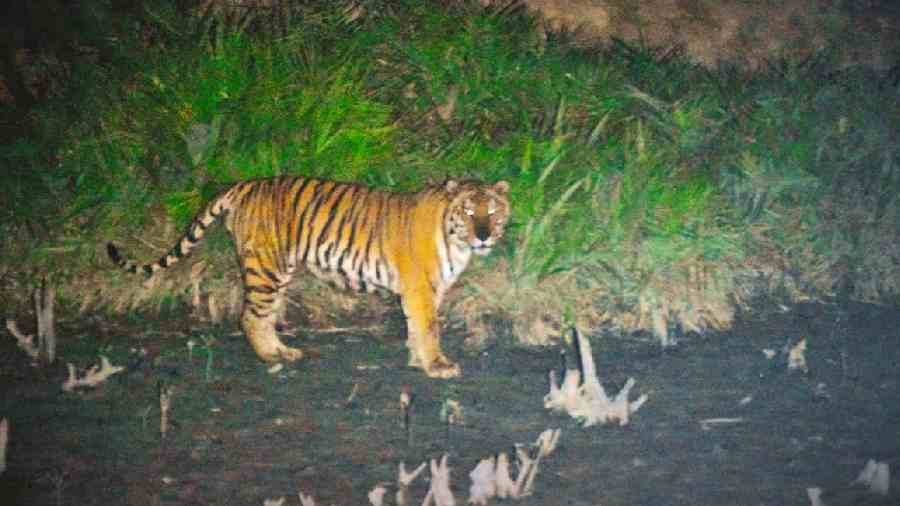An exercise to estimate the number of tigers in the Sunderbans is underway with the installation of cameras.
The cameras, placed in strategic locations called grids — each 2sqkm grid has a pair of cameras facing each other — will be in place for a little over a month.
Cameras were installed in four ranges — National Park East and West, Sajnekhali and Basirhat of the Sunderbans Tiger Reserve, and Matla of the South 24-Parganas division — in the first week of December.
On January 25, around 140 pairs of trap cameras were installed in two ranges — Raidighi and Ramganga — of the South 24-Parganas forest division.
The count is part of an annual state-level exercise, said forest officials.
A state-level tiger count happens every year in every tiger habitat in the country. Once every four years, the state-level exercises are halted to make way for a national tiger census. The report of the 2022 all-India tiger census is still awaited.
Two successive state-level exercises in Bengal, in 2019-20 and 2020-21, found at least 96 tigers in the Sunderbans.
Despite no increase in count in the 2020-21 census compared with the previous one, foresters were upbeat because the numbers suggested that two successive cyclones, Amphan in 2020 and Yaas in 2021, failed to dislodge the top predator in the mangroves. This time, foresters are hopeful of a rise in numbers.
Tigers are now being spotted by tourists more often than before, said officials.
A forest official on a watchtower in Bonnie Camp in the Sunderbans — a popular tourist destination — clicked a tiger on a moonlit night on Saturday.
“The raw footage from the trap cameras... has been encouraging. Several grids have yielded tiger images for the first time, though that does not mean a rise in the population. But we are confident of an overall rise in numbers,” said a forest official in the Sunderbans.
The terrain of the Sunderbans makes it the most unique tiger habitat in the sense that even jungles outside the reserve forests have tigers.
According to the previous state-level census, the Sunderbans Tiger Reserve had around 70 tigers and the South 24-Parganas forest division had 26.
“A solid prey base and similarity of terrain — rivers separating villages and forests — have contributed to the rise in the number of tigers outside the tiger reserve,” said a forest official.
This time last year, the trap cameras were being placed in the mangrove forests for the national tiger count.
The data from the cameras installed for the state-level census will be sent to the Dehradun-based Wildlife Institute of India.
The images will also throw light on the status of the other animals in the mangroves.
“It is not just about the number of tigers. The reports of the national and the state-level census are important for us to devise a broader forest management roadmap,”said a senior forest official in Bengal.


